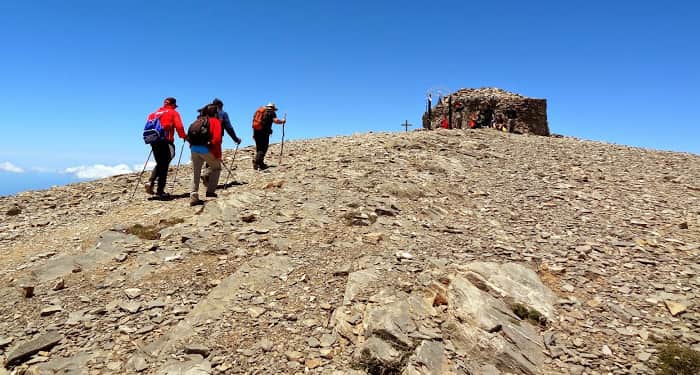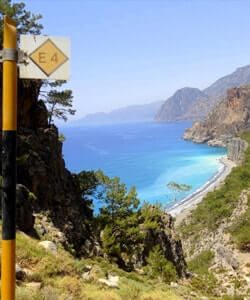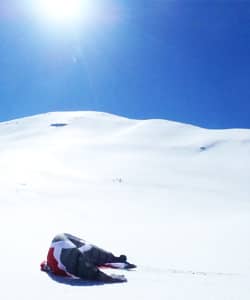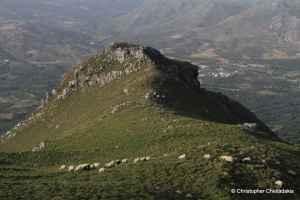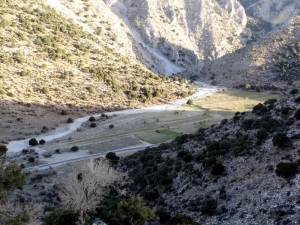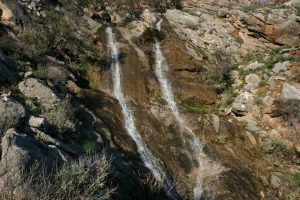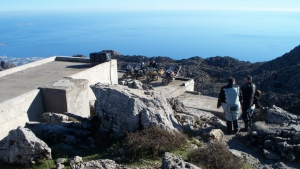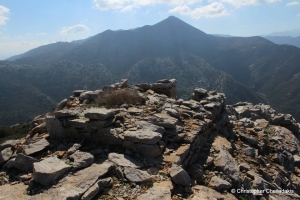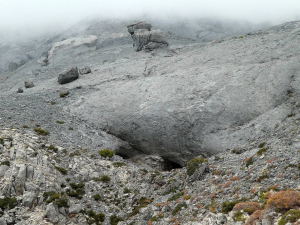Above the village Atsipades of the province St Basil, Rethymno we meet a range of small peaks with the higher being that of Kouroupa. The mountain range of Kouroupa stretches from west to the east separating the villages of the valley of St Basil by the seaside settlements, while defining a different climate. The boundaries of Kouroupa are sharp and are bounded by two long and majestic canyons, Kourtaliotis and Kotsifos. Beyond the peak of Kouroupa there are more smaller peaks, still very beautiful.
The small plateau of Erganos is located at an altitude of 950m at the southern slopes of Dikti Mounts and takes its name after the ancient town of Erganos that was built on the adjacent peak Kefali. The plateau is used today for growing vines, while the views of the surrounding wooded peaks and the valley of Embaros is very nice.
Just a few meters before reaching the small village of Orne (province of AgiosVasilios, Rethymno) we meet the imposing waterfalls of Selinara. It is actually a river of alternating waterfalls, not just one, on the south slopes of Kentros Mount.
The shelter Prinos is located at an altitude of 1100m at the eastern slopes of Psiloritis Mount. It can be accessed either by hiking 2:00 hours Ano Assites or driving from there. From here one can hike to the nearby peaks of Koudouni, Gyristi, Rouvas forest (4 hours) and Nida Plateau (7 hours). The shelter has been operating since 1967 and can accommodate 30 people.
The highest peak of Thripti, Stavromenos (altitude of 1476m) hosts the windswept chapel of Lord Christ (celebrates on September 14) and a small shelter. The shelter has a fireplace and is locked due to vandalism suffered a few years ago. For the key, ask at village Thripti.
At the north coast of Heraklion, between the beaches of Agia Pelagia and Fodele rises the steep low range of Bobias (max altitude is 423 meters). This area actually belongs to the small range of Kouloukonas. Despite its low altitude, it is a really wild place with slopes in the west and north side that raises sharply above sea.
Leon Cave was officially discovered on 11 August 2008 by a French-Greek team of speleologists, exploring the White Mountains of Chania (area Atzinolakos, near Melidoni of Fre municipality). However, its existence was known 15 years ago, during a French mission of the Catamaran Club. The area of Atzines has high speleological interest which has attracted mainly French, exploratory missions.
The temple is one of the many in Crete dedicated to Saint Anthony, the "saint of the caves". It is a catacomb carved in the soft limestone of the area. Probably, it is the residue of an ancient temple or grave formed after widening a pre-existing cave. We should not overlook the existence of the several Minoan sacred caves on Mount Youchtas.





